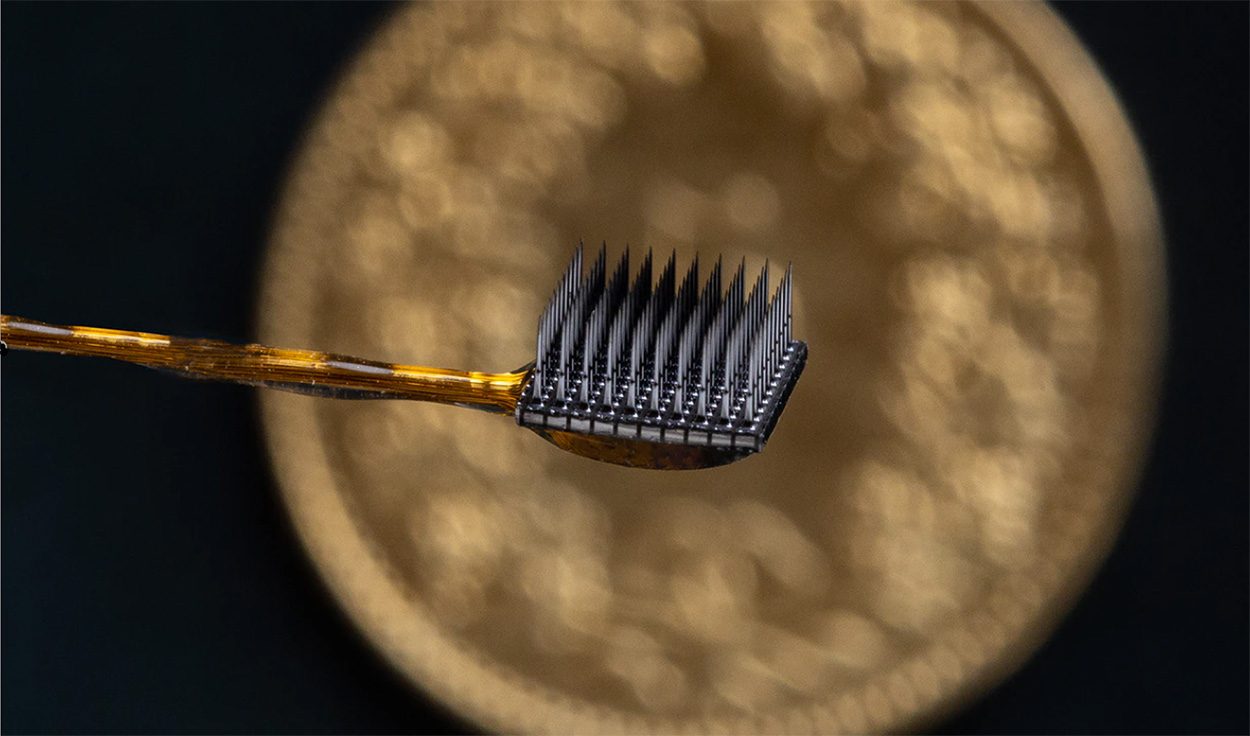People with amyotrophic lateral sclerosis (ALS) gradually lose the ability to move their muscles. In the advanced stage, they are fully conscious in a state in which they can no longer communicate with the outside world – shutdown syndrome. Researchers have now developed a system that allows communication without any muscle movement. Electrodes implanted in the brain measure brain signals and decode them as ‘yes’ or ‘no’. In this way, the patient can, for example, choose which letters are read aloud and form words and sentences from them.
Amyotrophic lateral sclerosis is an incurable disease in which nerve cells in the motor nervous system deteriorate, resulting in progressive paralysis. The most famous patient is the astrophysicist Stephen Hawking. While Hawking was still able to move his facial muscles and thus control a speech computer, other patients with more rapidly progressing forms of the disease are often in a state where they can no longer even control the eye muscles at will. Because earlier communication systems—including those based on the brain-computer interface (BCI)—required at least a few muscle movements, these patients had no way to communicate with the outside world.
A patient with complete closure syndrome
A team led by Ujwal Chaudhary of ALS Voice gGmbH in Mössingen in the Tübingen region has developed a system that requires no muscle movement. The reason for this was a request from the family of a patient with a rapidly progressive type of ALS. When he was diagnosed with the disease in 2015, the patient was 30 years old. In the same year he lost his ability to walk and talk, and since 2016 he has been artificially fed and ventilated. He communicated with his family at first through eye movements, but when it became clear that he was about to lose this ability as well, his family turned to Choudhury and his colleagues.
In a clinical case study, researchers presented patients with a system they developed that measures their brain signals and derives their “yes” and “no” answers from them. “This study answers a long-standing question, which is whether people with COS who have lost all voluntary muscle control, including eye and mouth movements, also lose their brains’ ability to process communication commands,” says co-author Jonas. Zimmermann from the WES Center in Geneva. “Successful communication using BCIs has already been demonstrated in paralyzed persons. However, to our knowledge, this is the first study to have successfully communicated with a helpless person for whom BCI is now considered the only means of communication.”
Electrodes in the brain
The brain and computer interfaces commonly used to date are often non-invasive. To use it, electrodes are attached to the scalp that record brain signals. In the case of the completely paralyzed patient, these signals were too imprecise to be decoded reliably. So Chaudhry and his team implanted two small plates with microelectrodes into the motor cortex. If the patient imagines movements, brain activity in this area changes. In several training sessions, the patient learned how to consciously modulate his brain activity in such a way that the electrodes could record and recognize this. He was aided by a feedback system that converts changes in the firing rate of the corresponding neurons into sound signals.
Patients can now control their brain signals in such a way that a computer can extract “yes” and “no” answers from them. This way he can answer questions, as well as spell words and sentences. A spelling program reads the alphabet to him and confirms the correct letter with “yes”. However, it takes some time for a complete sentence to come together in this way – on average, a patient can “type” about one letter per minute using this system.
Communication with the family
The system enables patients to continue to communicate with their human peers at all. Researchers report that many of his letters relate to his care. For example, he said he would like gel for his dry eyes more often, what clothes he would like to wear at night, and also what music he would like to listen to at the moment. He also made suggestions for improving the system himself. Among other things, the researchers introduced the word recognition software at his suggestion. He also uses the system to communicate with his wife and son.
“This study also showed that, in principle, the system could be used in the home with the participation of family or nursing staff. This is an important step for people with ALS receiving outpatient care,” says Zimmerman colleague George Kovas. “This technology, which will benefit the patient and their family in their own setting, is a great example of how technological advances in the field of BCI can be implemented to have a direct impact.” The brain can eventually make it possible to directly decode imagined speech and turn it into audible speech.
Source: Ujwal Chaudhary (ALS Voice gGmbH, Mösslingen, Germany) et al., Nature Communications, doi: 10.1038/s41467-022-28859-8

“Alcohol buff. Troublemaker. Introvert. Student. Social media lover. Web ninja. Bacon fan. Reader.”






More Stories
Ecologists Celebrate New Xesap National Park in Laos | Science
Is the wrong diet making you forget?
We can study it with a new telescope.